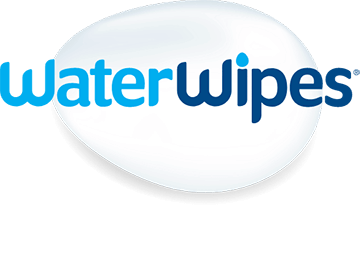Understanding common baby skin concerns
There's nothing quite like the velvety soft, delicate skin of a baby. However, there are many different skin disorders that can affect their skin.
Many babies are prone to skin irritation in their first few months. Here's what you need to know about some of the most common baby skin concerns and advice for what you can do about it.
Baby acne
Baby acne is acne that develops on a newborn's skin. It is usually characterized by small red or white bumps and often develops within the first two to four weeks after birth. This is not to be confused with infantile acne which begins later (between 3 and 6 months of age); if you’re unsure please consult your GP.
It can occur anywhere on the face, but usually appears on the cheeks, nose and forehead. Baby acne is temporary and usually clears up on its own within three to four months.1
Top baby acne management tips:
Cleanse the area with warm water two or three times a day. Gently pat skin dry.
Don’t use soap or lotion on affected areas
Don’t squeeze or pick at the acne
Do not use adult acne or other adult skincare products
If the problem persists, or is severe, ask your doctor about prescription or over-the-counter medication that might help
Cradle Cap
Cradle cap is a harmless skin condition that's common in babies. The symptoms are red, flaky or scaly skin on the scalp. Yellow crusts or greasy patches can sometimes develop too.
It's not clear what causes cradle cap and although some parents feel cradle cap is unsightly, it does not cause any problems to the baby (it is not itchy or painful) and it isn’t contagious.2 It usually clears up on its own within a few months.2
Top cradle cap management tips:
Wash your baby's hair regularly with baby shampoo. Regular washing may stop crusts forming
Gently rub baby oil or a vegetable oil (such as olive oil) into the scalp to soften the crusts
Brush your baby’s hair using a soft brush to remove the crusts after leaving oil on the area for a few hours
Dry skin
The skin of newborn’s is much thinner than that of an adult. Their skin can therefore absorb and lose moisture more quickly, making it prone to dryness.
When a baby is in the womb their skin is protected by a waxy substance called vernix. Once a baby is born the vernix clears from the skin. With the skin exposed to the world for the first time, babies may develop dry patches. It is common for babies to experience some skin dryness, and it doesn't mean they have eczema.
Top dry skin management tips:
You do not need to bathe your newborn every day. Three times a week should be enough until your baby becomes more mobile.3
Add an emollient to the bath water. Bath emollients are designed to protect your baby's skin while gently cleansing and moisturising it
Use lukewarm, not hot water for bathing
Apply an emollient cream all over your baby's body as often as needed to prevent dry developing into eczema
If using wipes, use fragrance-free and alcohol-free baby wipes. Check they do not contain alcohol or other unnecessary ingredients. WaterWipes is the world’s purest baby wipe and provides gentle but effective cleansing for your baby's skin
Eczema
Babies often get red, scaly skin known as eczema. The symptoms are patches of red, dry and itchy skin on the face or behind the ears, and in the creases of the neck, knees and elbows. 4
The exact cause of eczema is not known. In some cases it may be inherited, and in others it can be triggered by an allergy or sensitivity. Most babies eventually grow out of eczema, but speak to your GP or health visitor if you think your child has eczema.3
Top eczema management tips:
Keep your child’s skin well moisturised with an unperfumed emollient. You may wish to do this a couple of times a day, for example, when you feed or change your baby
Avoid aqueous cream, soap, and bubble bath as these can dry or irritate the skin
If using wipes, use fragrance-free and alcohol-free baby wipes. Check they do not contain alcohol or other unnecessary ingredients.
Try to keep your child's bedroom cool as overheating can make their eczema worse
Some fabrics can irritate the skin. Try to avoid wool and nylon and stick to cotton instead
Steroid creams can reduce inflammation during flare ups. They are safe as long as they're used as directed by your GP or pharmacist
Try to identify and avoid anything that irritates the skin or makes the problem worse, such as soap powder, animals, certain foods, chemical sprays and cigarette smoke
Speak to your doctor if symptoms appear to be triggered by certain foods, but do not exclude a food group without first consulting your doctor
Milia (White Bumps)
Milia is the appearance of tiny, slightly raised, white or yellowish spots that are most commonly seen across the nose, chin, cheeks, chest, forehead or around the eyes of a baby. They may also occur in other areas, such as on the upper trunk and limbs.5
Milia develop when tiny skin flakes become trapped in small pockets near the surface of the skin.4
Nearly half of all newborn babies have milia, although if your baby was born prematurely, then they may not develop immediately.
Top milia management tips:
The spots should disappear on their own, without treatment, in a few weeks
If you're concerned about your baby's complexion or it doesn't clear up within three months, consult your baby's doctor.4
Nappy Rash
Up to a third of babies and toddlers in nappies have nappy rash at any one time.6 It is most commonly caused by irritation of the skin from the ammonia in wee and poo.
Nappy Rash is characterized by red patches on your baby's bottom, or the whole area may be red. Their skin may look sore and feel hot to touch, and there may be spots, pimples or blisters.5
Psoriasis
Psoriasis is rarely diagnosed within infants, but typically causes patches of skin that are dry, red and covered in silver scales. Psoriasis can also cause itching or soreness. In psoriasis the process of shedding old skin cells and replacing them with new ones is much quicker than normal. It isn’t clear what causes psoriasis, but it does run in families and is believed to be related to the immune system.
The two most common forms of psoriasis are: plaque psoriasis and guttate psoriasis.
With plaque psoriasis dry red skin lesions, known as plaques, covered in silver scales appear on elbows, knees, scalp and lower back, but can appear anywhere on your body. The plaques can be itchy or sore, or both. 7
Guttate on the other hand is a specific form that appears mainly in children. It typically appears about 2-3 weeks after infection and causes a more generalized rash of small raindrop shaped spots.
Top psoriasis management tips:
As with eczema, try and keep your baby’s skin moisturised
Avoiding heat and cold if these seem to worsen the rash
Keep the affected areas clean and dry
If using wipes, use fragrance-free and alcohol-free baby wipes. Check they do not contain alcohol or other unnecessary ingredients. WaterWipesare the world’s purest baby wipes and provide gentle but effective cleansing for your baby or toddler’s skin.
For most children, using gentle emollients is all that is needed, however, if symptoms persist your doctor can prescribe topical treatments
If topical treatments do not work, your doctor may refer you to a dermatologist who can offer therapies like ultraviolet light or oral medications
If your baby develops spots or a rash and you're not sure what it is, always speak to your GP, midwife or health visitor. If your baby seems unwell and has other symptoms, such as a fever, go straight to your GP.
References
1 https://www.mayoclinic.org/diseases-conditions/baby-acne/symptoms-causes/syc-20369880
2 https://www.nhs.uk/conditions/cradle-cap/
3 https://www.mayoclinic.org/healthy-lifestyle/infant-and-toddler-health/in-depth/healthy-baby/art-20044438
4 https://www.nhs.uk/conditions/pregnancy-and-baby/eczema-in-children/
5 https://www.mayoclinic.org/diseases-conditions/milia/symptoms-causes/syc-20375073
6 https://www.nhs.uk/conditions/pregnancy-and-baby/nappy-rash/
7 https://www.nhs.uk/conditions/psoriasis/symptoms/

